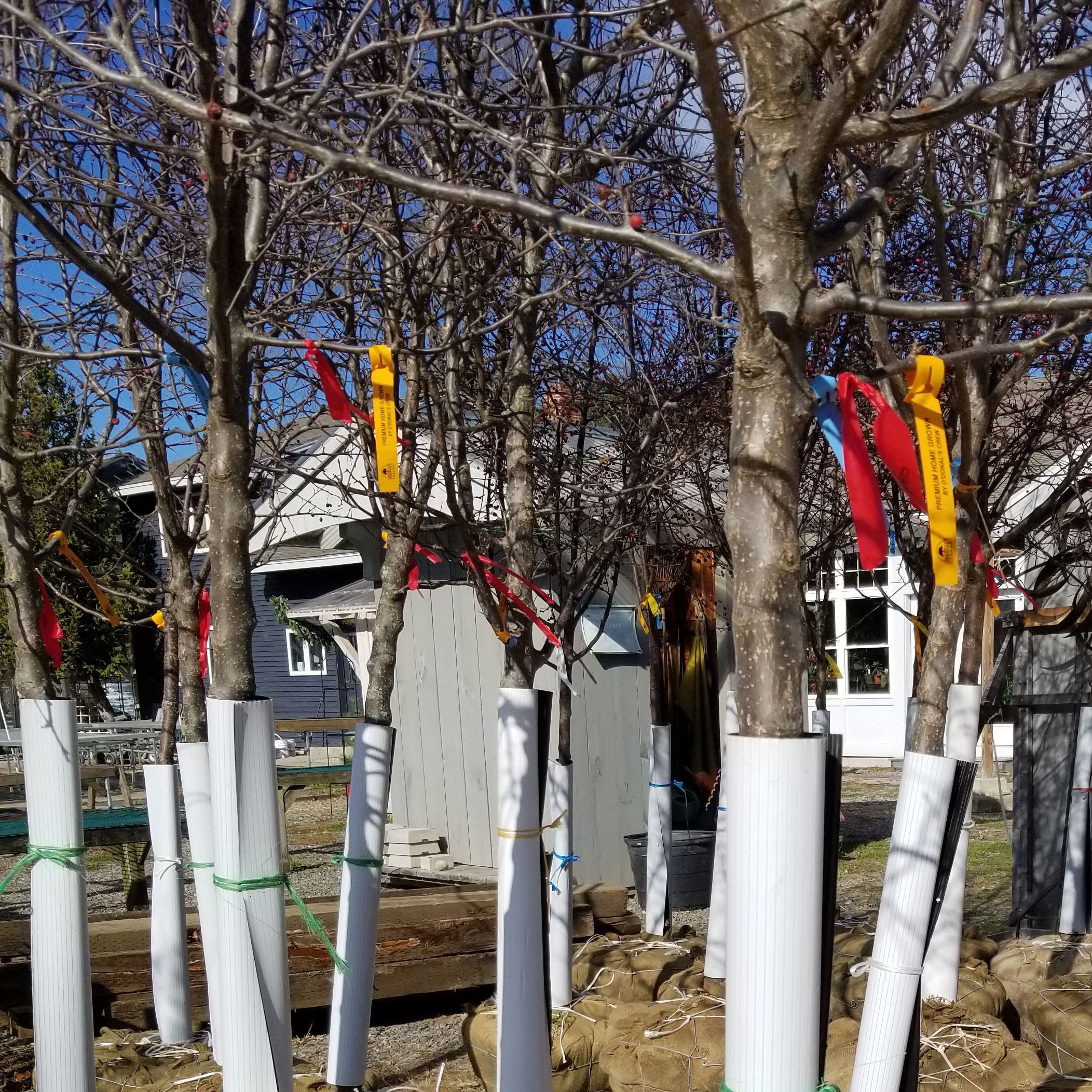The cold season is fast approaching, and Maine winters can be especially hard on new plantings. Here are some of the conditions to watch out for and tips on how to combat them.
Sun Scald
For a plant to survive the winter successfully, you want it to freeze and stay frozen. Most winter damage on trees or shrubs is caused by a rapid fluctuation of temperature. When a warming sun slowly heats up exposed bark, the plant’s cells will activate, but when the temperature drops at night, those cells will rapidly refreeze and die. When this happens, the damage is called sun scald, and it occurs most often on the southwest exposed side of a tree or shrub’s trunk. Long fissures in the bark and sections of dead bark falling off in the spring are indicators of sun scald. Wrapping the trunk in a light-colored trunk wrap, such as TreeKote’s Vinyl Tree Guard, can help deflect the heat from the winter sun. We recommend wrapping the trunks of newly planted trees with southwest exposure, especially thin-barked trees such as cherry, crabapples, maples and birches. Once the tree is established wrapping isn’t necessary, unless it’s placed in a very exposed area and has had a history of being scalded.
Evergreen Winter Burn
Have you noticed patches of brown on your arborvitae, or rhododendron leaves that are bleached white in the spring? This is winter burn. Evergreens are most susceptible to winter burn, although some more tender deciduous plants like Japanese maple or butterfly bush can also get winter burn. In winter when evergreen needles or leaves are warmed by the sun they lose water, and with no way to replenish the water because the roots are frozen, they turn brown or bleach white and die. In exposed southwesterly and windy sites, the risk of winter burn increases. You can choose to wrap trees and shrubs in risky sites with burlap or Dewitt Deluxe Plant Protection Fabric. For smaller shrubs you can use wooden shrub covers or lay evergreen bows in a protective layer over the shrub. We recommend wrapping newly planted evergreens and other tender deciduous trees planted in risky sites in the first year. You can wrap your plants starting in early November and unwrap in April.
The most important long-term practice that can help your plants from getting winter damage is to water during the growing season, especially during periods of drought. Water-stressed plants are more susceptible to the ravages of Maine winter.
Animal Damage
When winters are long and food is scarce, mice and other rodents may feed on the low bark and branches of your trees and shrubs. A little nibble here and there won’t do the plant much harm in the long run, but if the critters chew away the bark all around the trunk (called girdling) the plant will be unable to draw water up through its trunk and it will die. Trunk wrap can help deter the critters, or you can choose to install hardware cloth in a cylinder around the base of the trunk 18-24 inches high. Be sure to bury it at least 2 inches below the ground because mice will tunnel under the snow to get at the tasty bark.
Damage caused by browsing deer is, of course, one of the Maine gardener’s biggest concern in the winter. Last winter was an especially bad deer-damage year, with deer chomping away on many plants, as well as ones on our deer-resistant plant list. Outside of fencing in your yard or surrounding individual plants with hardware cloth, there is no sure-fire way to keep deer away, but wrapping your most vulnerable plants with burlap over the winter can always help.
Preparing Flower Beds
Winterizing your flowerbed is simple. You can begin to cut back your perennials when they start to turn brown and die back in late fall, Then, applying a 3 inch layer of mulch, leaves, straw or woodchips can help insulate your beds for the winter.
What about my Hydrangea?
If you have a large-leaf mop-head hydrangea, chances are you may have struggled with getting it to flower. This problem is, in fact, a winter damage related issue! Hydrangea macrophylla grow their flower buds for the following year in the summer. While the buds that become new leaves are hardy, the buds that become flowers are very tender and often die over the winter. This results in a healthy, green and bushy shrub, but no flowers. To combat this, we recommend collecting evergreen bows and laying them crisscross through the hydrangea branches to create a mound. This will help snow to pile up around the hydrangea and better insulate the plant.






